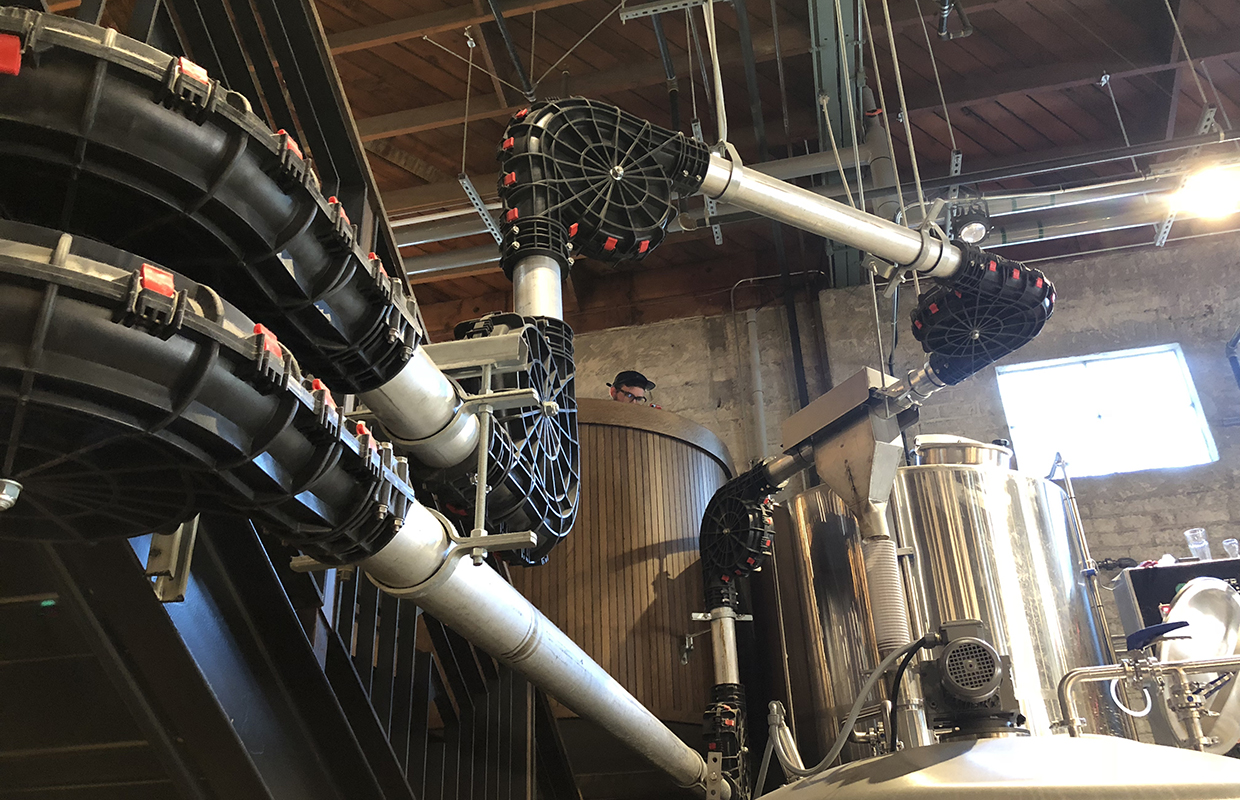
No one would argue that building and equipping a brewery isn’t overwhelming. Where to start? What if you already have some equipment? How much is this thing going to cost?
PLANNING
Start with a pen and paper. Review your space, infrastructure requirements, equipment needs, expansion plans, and so on. Get input from other brewers and breweries — chances are they’ve learned valuable lessons and can pass that knowledge on to you.
And now the fun part: the budget. Beaucoup bucks are usually allocated to the brewing system and fermentation tanks, as these generally comprise the largest up-front costs — and let’s face it — they’re the flashiest pieces. But now that you have your list of needs, be sure to allocate sufficient funds for the system that will allow you to save on your most expensive ingredient: grain.
‘Ok, but how much is sufficient? How do I know I’ve considered everything? Where do I go from here?’ Equipping a brewery can depend on your in-house capabilities and may call for professionals.
- FULL-SERVICE INTEGRATORS design, fabricate, and install finished systems from the ground up. Connecting components are custom-made so they work with pre-existing equipment, space restrictions, and future expansion plans. Since these providers are involved with the equipment and system, they will also have their own unique solutions to optimize, automate, and maintain processes. They provide support before, during, and after installation and have their reputation on the line to ensure your entire system functions properly. These providers cost the most up-front but can save money in the long term and carry the least amount of risk.
- DROP-SHIPPERS are essentially consultants who know which pre-existing components on the market work best for brewing, but don’t have fabrication or bespoke capabilities. They help design systems that work great if things go as planned. This is usually more economical because the components are mass-manufactured. But since the system will be restricted by what components are available, it becomes more expensive as the system ages, needs to grow, or faces a dilemma it wasn’t intended for. The best way to know who does what is to ask what pieces they fabricate.
- SELF-SOURCING is a good way to get equipment for a bargain but requires prior experience. Since equipment and connecting pieces are sourced separately, you are on the hook to make them fit together in the space you’ve allocated. If you tell a chain-disk manufacturer and a silo manufacturer that you would like to connect the two, you will likely receive two different gates, neither of which work. Any support provided will be component-based — you must be skilled at troubleshooting! Is your mill is getting a practical feed rate from conveyance? Is your grain flowing properly from piece-to-piece? Are your connections dust-tight? We highly recommended using food-grade components at junctures where grain is known to leak.
EXPANSION
Obviously real estate in a brewery is always at a premium, but there are a few integral components that should be in place from the start. ABM Equipment’s Adam DuBose, Engineering Manager, recommends starting with a mill and an auger and leaving room for a grist case on the ground or above the mash.

“Leave space by your mill for a specialty hopper and specialty grains, or if going larger, know where your silos are going,” DuBose said. “Capturing economies of scale with bulk grain will give you an advantage because most breweries don’t think about it until they’re out of space or money.”
MAINTENANCE & HIDDEN COSTS
As in most industries, you get what you pay for. If you go with a cheap mill you’ll be forever tinkering with it and suffering variable yields. They’re fine to get started, but quality mills are a big part of product consistency and better yields (even a 4% increase adds up quickly). And don’t forget the impact of decisions on the system as a whole! A silo, for example, is a package deal with a chain disk and automation — all necessary, but they should be budgeted together.
LAYOUT AND AESTHETICS
Efficient brewery layouts seem like a must, but often aren’t obvious until it’s too late. So plan thoroughly from the start! Spent grain can be messy so you wouldn’t want it by a storm drain. If you have a dust collector make sure it doesn’t vent toward where employees work or patrons will be enjoying your brews! Considering showing off your brewery to patrons? Make sure there aren’t any physical obstacles (even standing water) that could be a liability during a tour.
When in doubt, call a professional. Chances are good they’ve encountered your situation before. Be sure to reference and update your plan throughout – and soon enough, you’ll be planning your grand opening.






Be the first to comment